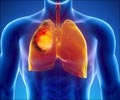Artificial intelligence helps in understanding chest radiography. This will contribute to detecting chest diseases, especially lung cancer.

‘Detection rate for actionable lung nodules on chest X-rays was greater when aided by artificial intelligence (0.59%) than without AI assistance (0.25%).’





“Detecting lung nodules, a primary finding of lung cancer, is one of the crucial tasks in chest X-rays,” said study co-author Jin Mo Goo, M.D., Ph.D., from the Department of Radiology at Seoul National University Hospital in Korea. “Many studies have suggested that AI-based computer-aided detection software can improve radiologists’ performance, but it is not widely used.” To identify the actual effect that AI has in clinical practice, researchers included 10,476 patients with an average age of 59, who had undergone chest X-rays at a health screening center between June 2020 and December 2021.
“As our trial was conducted with a pragmatic approach, almost all enrolled participants were included, which is a real clinical setting,” Dr. Goo said.
Application of Artificial Intelligence in Lung Cancer
Patients completed a self-reported health questionnaire to identify baseline characteristics such as age, sex, smoking status and past history of lung cancer. Eleven percent of the patients were current or former smokers.The patients were randomly divided evenly into two groups—AI or non-AI. The first group’s X-rays were analyzed by radiologists aided by AI while the second group’s X-rays were interpreted without the AI results.
Solid nodules with diameters either larger than 8 millimeters or subsolid nodules with a solid portion larger than 6 millimeters were identified as actionable, meaning that the nodule required follow-up according to lung cancer screening criteria.
Advertisement
While older age and a history of lung cancer or tuberculosis were associated with positive reports, these and the other health characteristics did not have an impact on the efficacy of the AI system. This suggests that AI may work consistently across different populations, even for those with diseased or postoperative lungs.
Advertisement
Source-Eurekalert













